I learned the term “action designer“ from They Shouldn’t Have Killed His Dog, a collection of interviews in and around the John Wick franchise. The difference between this role and stunt coordinator in the moving pictures business appears to be that one shows up to set and figures out how to safe and sanely execute the stunts, and the other is the lunatic that came up with that shit in a writing room. I imagine a choreographer to be somewhere in between this process, training the creatures who will be on camera how to do their thing without turning their bones into sand.
The great news for me is that, since I am that lunatic in a writing room and the only safety risk is eye strain and my fingers cramping from drawing too hard, I can do whatever the fuck I want with my action scenes.
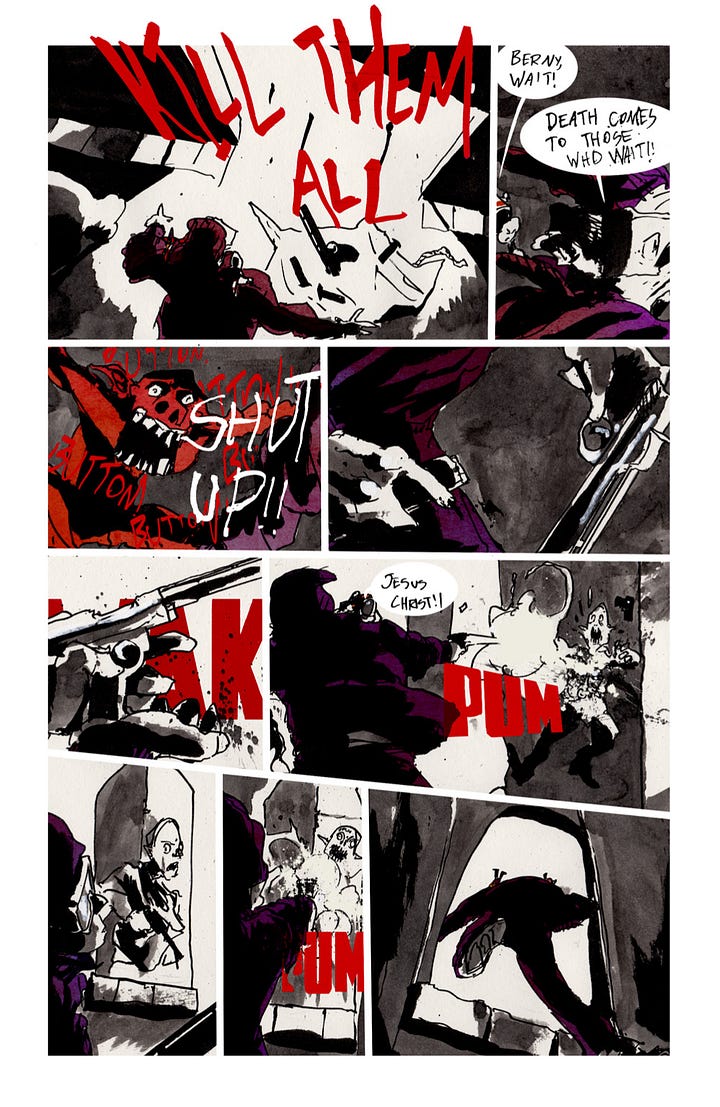
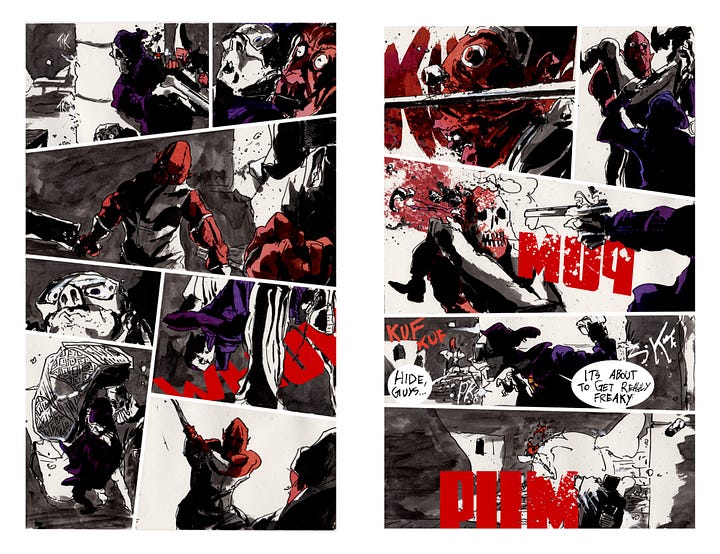
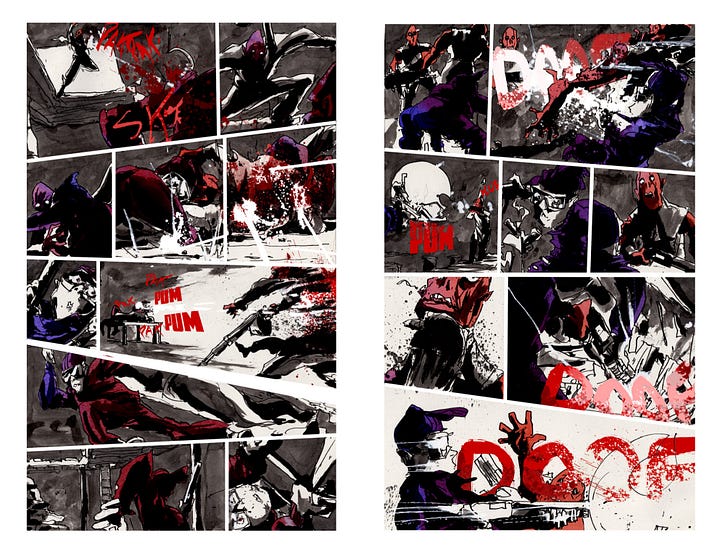
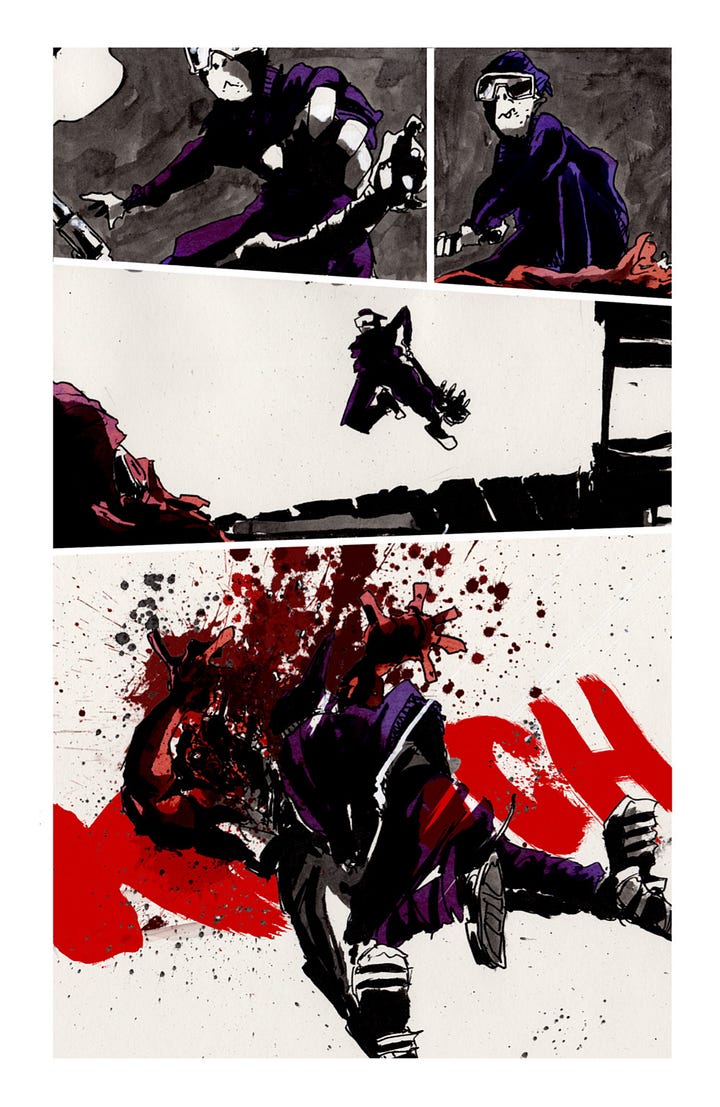
From FREAKSNOW: REVENGE IS A DRUG (2021)
But my process has become more refined since then. So how do I do thing? I’ll run through it in phases real quick first.
Phase 1: Get Idea
Phase 2: Record Idea
Phase 3: Execute Idea
Phase 1: Get Idea is the easiest. Everyone has ideas, right? Then you think about them and refine them. I like to make a playlist in the spirit of what I’m working on, put on headphones and run around in a circle and jumping around. I’m serious. There is floor space in my office specifically for this.
According to family members, I’ve been doing this since I became sentient
But like I said, that’s the easy part. Everyone has ideas, some are even good. But ideas are nothing beyond comforts, little pills you can take for fun on a long drive, until you build them. It begins in the next phase!
That’s what I really want to focus on today. Phase 2: Record Idea.
This is, surprisingly to me, upon reflection, the hardest part. Especially if you have the pleasure of working with another artist. My big learning period with this started with my work on Ninja Funk issues 4 and onward. I’ve come up with some techniques to help communicate and I’ll probably go into more detail about that at a later time. But now.
Phase 2: Record Idea
So you have Getten Idea. Now what?
Record It or it will wither and vanish.
In the past, I’ve done this by writing excruciating, detailed scripts, trying to pin down the exact sense of motion and activity in words. An egregious sample from an issue of Carl Bastard I wrote in 2019:
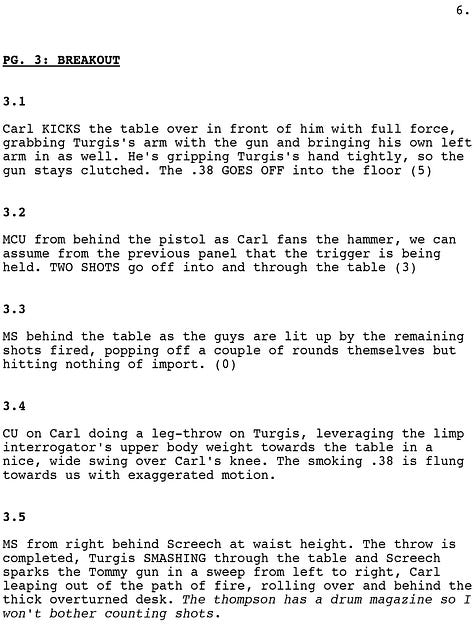
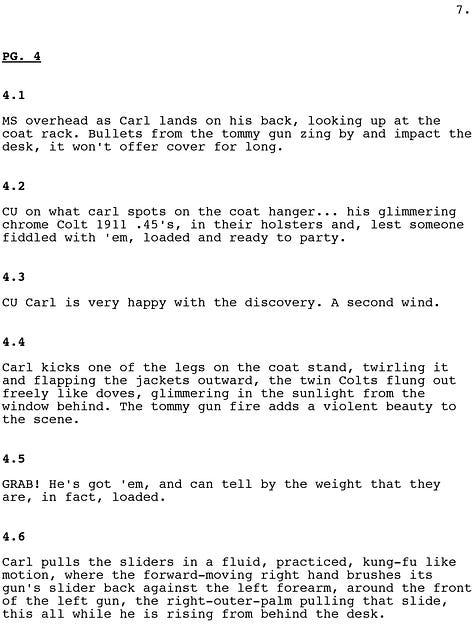
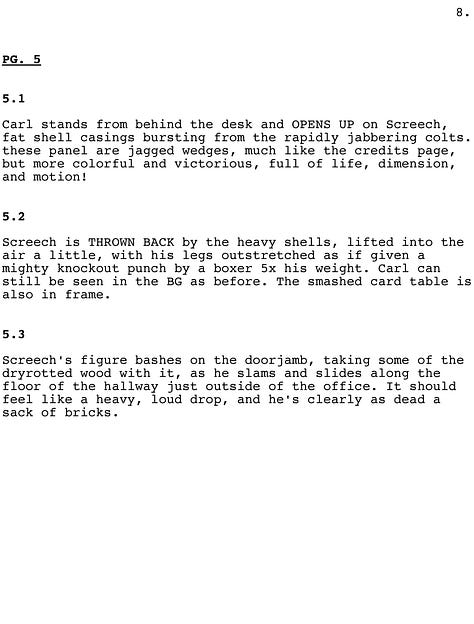
After you recover from the migraine, check to make sure your eyes haven’t melted to the floor from trying to follow that.
The only reason I have any chance of deciphering that wad of chewing gum into imagery is that I am the one who came up with it. I wrote down the movie I was watching in my brain. This is NOT a solution I could use if I had to give this to another artist. And trust me, I’ve tried. Visual aids are always a must in communicating action in my opinion. Which is right. I don’t have certainty very often, but this one I’m anchoring my teeth into.
Recently I thought to myself: “If writing my ideas for an action sequence isn’t the most effective way to record them, then something is better. What is that?”
Enter my idea and what I’m currently experimenting with. I call it
It’s when I take a break from jumping around to scrabble out a dirty hyroglyph message to my future self, this time in rough ROUGH page layouts.
It nasty. Color coded, so my client could be assured that I wasn’t having an episode of mania.
It’s also been a game changer, because instead of rehearsing an action sequence and then attempting to describe it in words later, and then later try to interpret that, I’m doing the closest thing I can approximate to recording my thoughts in real time.
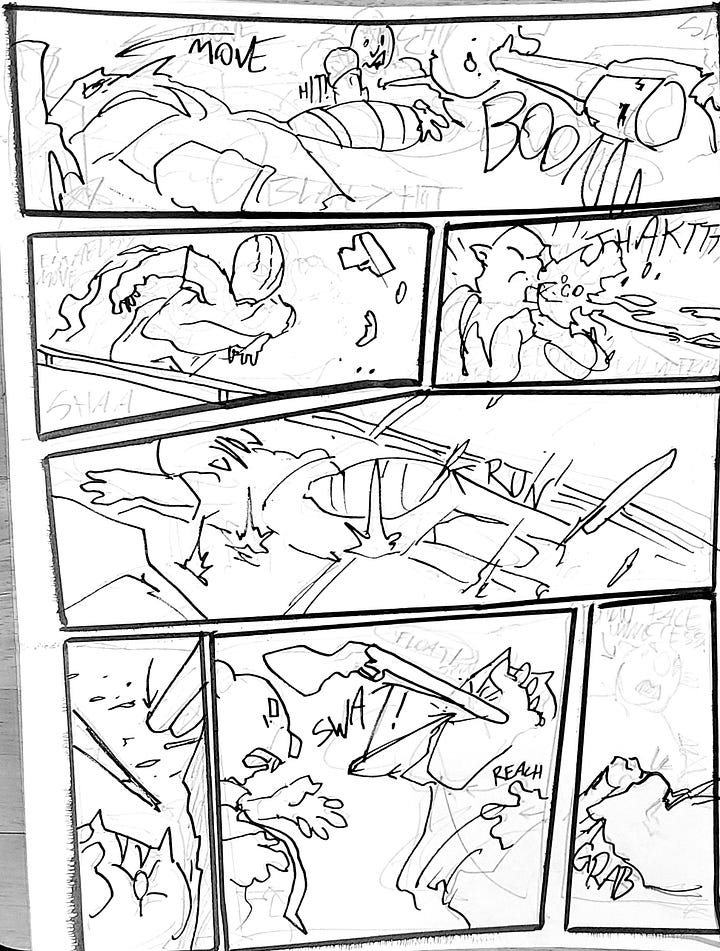
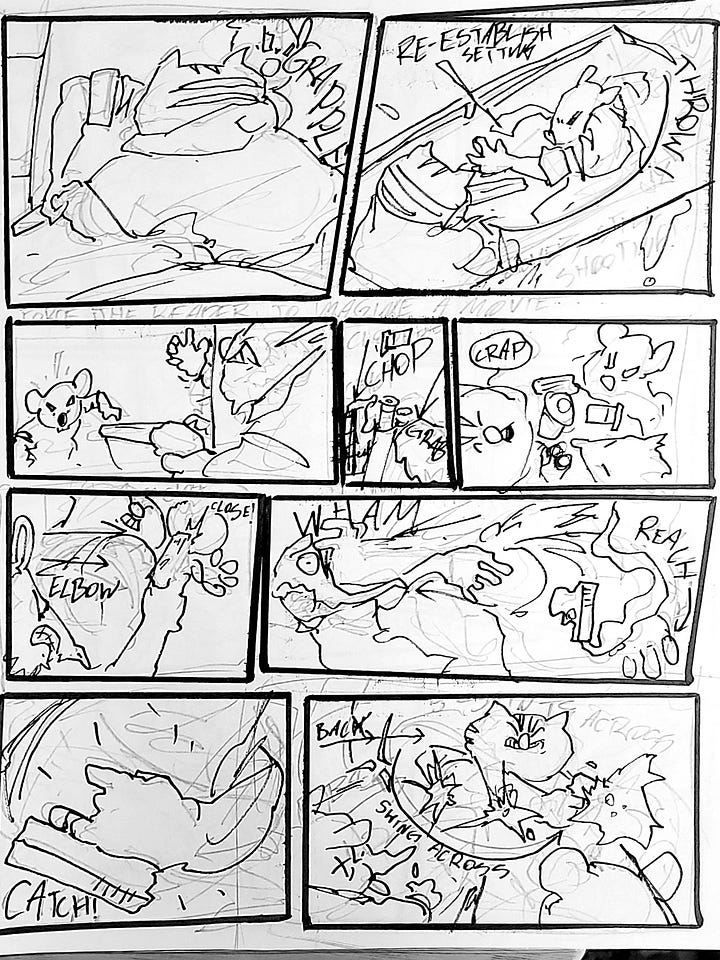
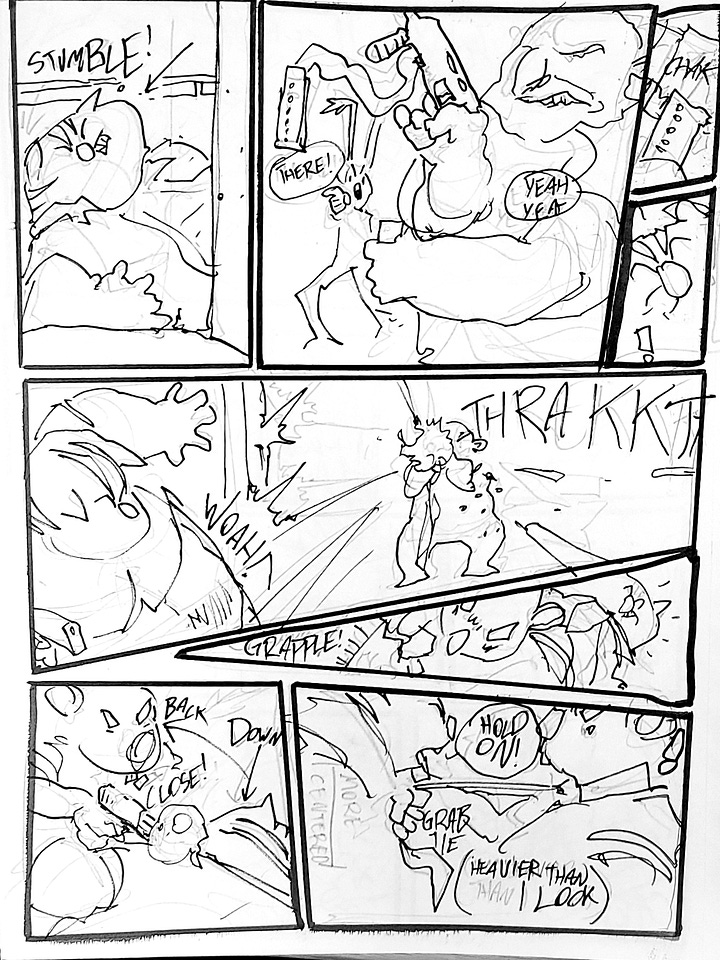
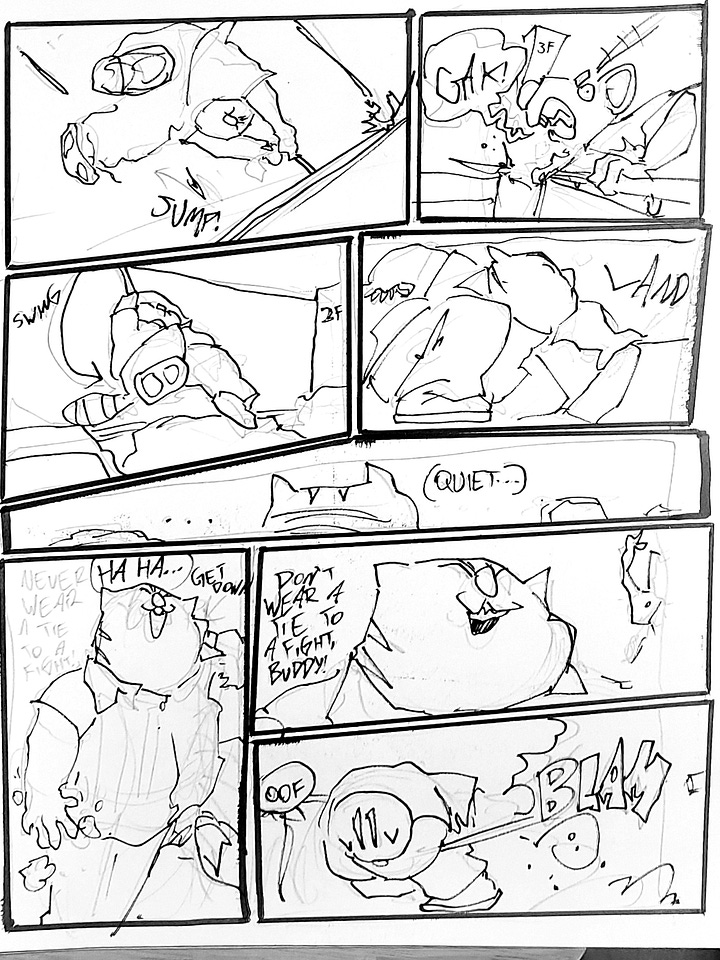
I write monosyllabic neanderthal notes in them too. Simple reminders of the visceral feelings to convey.
Imagine, stop, draw. Imagine, stop, draw. Repeat until the scene events are recorded to satisfaction. I scrawled an inking layer onto this sample to make them a little clearer for you, Dear Reader. 1
Important to remember that this is a pre-scripting process. I’ll use these drawings as notes to record a script later, and an artist might even use them as reference material. I will, because I can read them easily.
My point in bringing this up is to highlight its place in the process: This is not something I would want to spend time on any further than it takes to Record Idea. It’s ugly. Whatever! It doesn’t matter what it looks like because it’s the quality lumber that the of the 2x4 in the wall is made from. It’s not the paint, it’s not the texture, it’s not even the drywall. But it is SUPER important.
Will it provide better results than before? Hard to measure. But damn is it ever faster, clearer, and hopefully reduces Artist Confoundment than just writing it down.
Next week, I’ll go more into Phase 2.5: Be Nice to Artist. Not me, I am fit for abuse. The other artist, whoever they are.
Enjoy, get some, and go eat some unhealthy garbage for once!
And it’s the last time you will be subjected to my craptacular phone ‘scanner’.



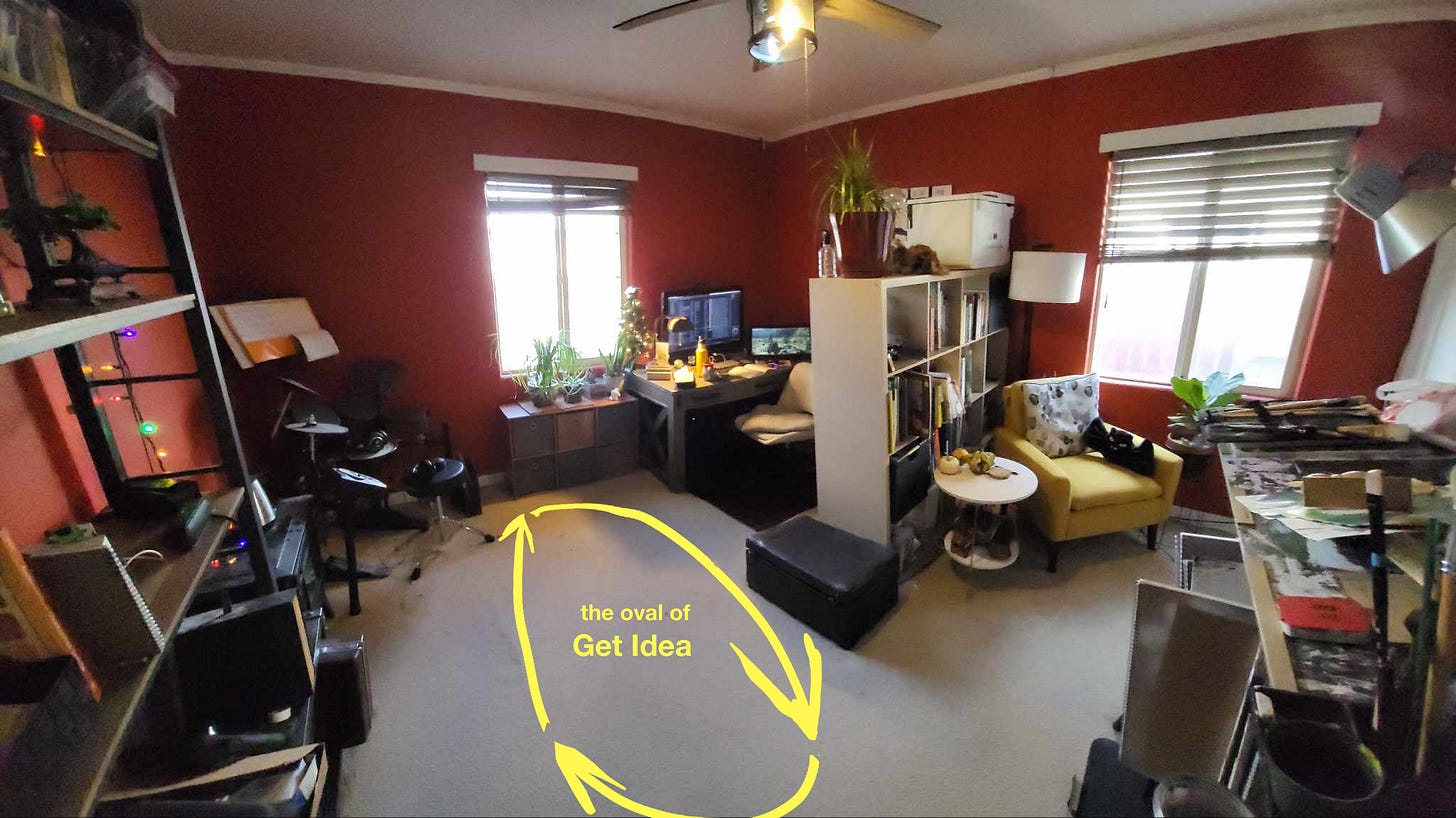

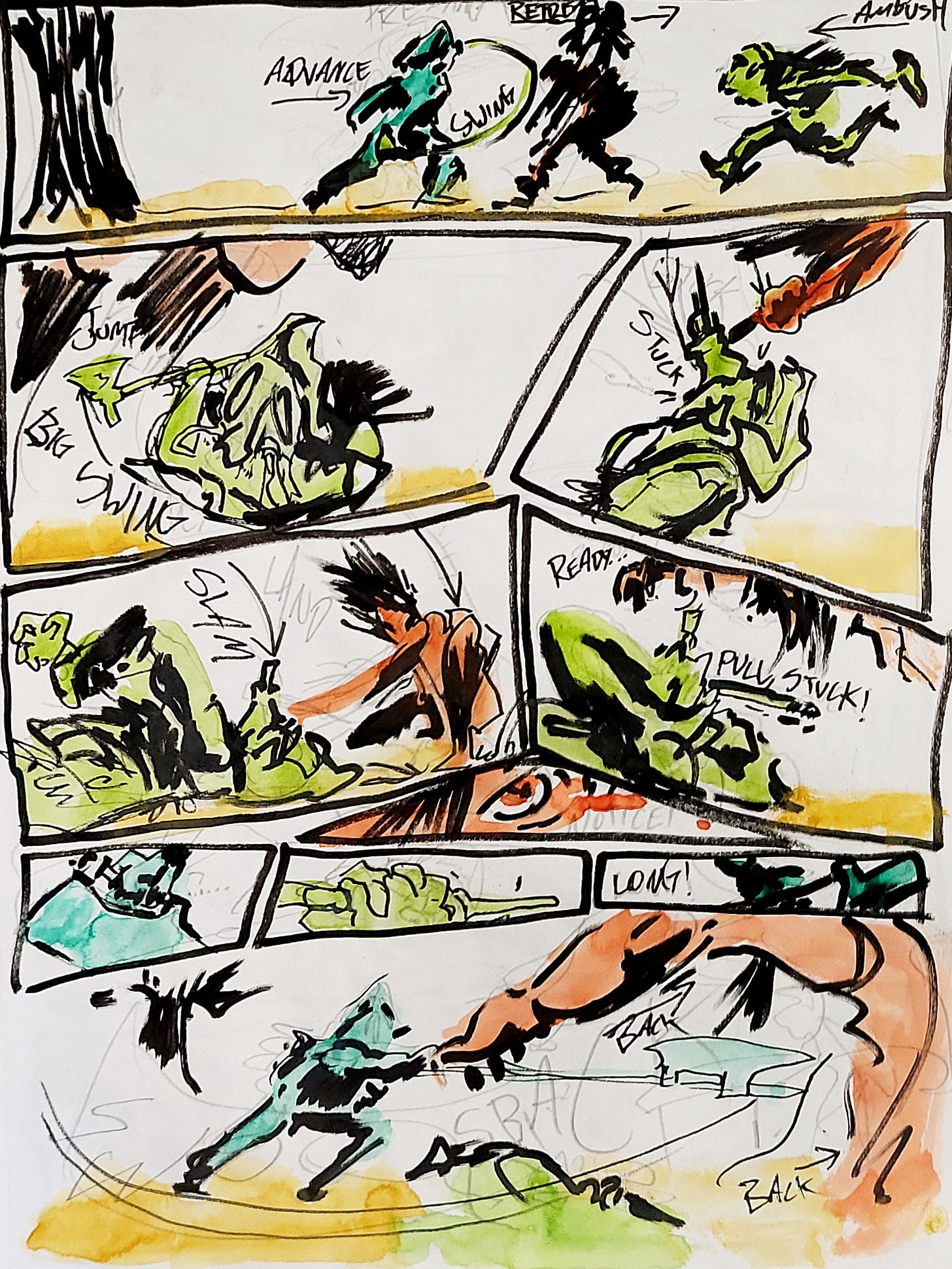

I find this amazingly insightful. I am NOTTTT a creative person, but I love looking inside the minds of those who are.